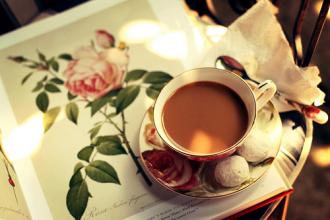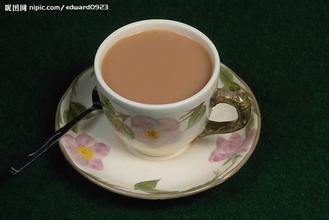The chemical composition of coffee
Main chemical constituents of raw coffee beans:
Component content (%)
Carbohydrate 60.0
Reducing sugar 1.0
Sucrose 7.0
Pectin 2.0
Starch 10.0
Garrison polysaccharide 5.0
Hemicellulose 15.0
Holocellulose 18.0
Lignin 2.0
Aroma:
Aroma is the life of coffee quality, and it can best represent the coffee production process and baking technology, as well as the climate, elevation, variety, refined treatment, harvest, storage, and the appropriateness of baking technology in the consuming country. The results of gas chromatographic analysis showed that the aroma of coffee was composed of acid, alcohol, acetaldehyde, ketone, ester, sulfur compound, phenol, nitrogen compound and nearly hundreds of volatile components. Generally speaking, fat, albumen and sugars are important sources of aroma, while lipids blend with the sour and bitter of coffee to form a smooth flavor. Therefore, the disappearance of fragrance means that the quality is getting worse, and the relationship between aroma and quality is very close.
The bitter mellow aroma of coffee:
The color, aroma and taste of coffee are caused by some complex chemical changes that take place during the baking process. Therefore, raw beans must go through appropriate chemical procedures to achieve the most balanced state of its essential ingredients in order to be regarded as the best baked beans. The aroma of coffee varies with the heat, so the baking time should be shortened as much as possible, and the heat should be controlled at the lowest temperature that can produce effective chemical composition of coffee beans, that is, the time and heat of the shortest process, so that coffee beans can produce the most suitable composition ratio.
Sugar:
Without sugar, you will not only feel the bitterness of caffeine and the sour taste of tannin, but also feel sweet, which is caused by the sugar contained in the coffee itself. After baking, most of the sugar will be converted to caramel, bringing a unique brown to the coffee.
Minerals: there are lime, iron, sulfur, sodium carbonate, phosphorus, chlorine, silicon and so on, because the proportion of very little affect the flavor of coffee is not big, combined to bring only a little astringent taste.
Crude fiber:
The fiber of raw beans will be carbonized after baking, which combines with the caramelization of sugar to form the hue of coffee, but the fiber turned into powder will have a considerable impact on the flavor of coffee. Therefore, we do not encourage the purchase of powdered coffee beans, because we are unable to taste the flavor of the coffee.
Protein:
The main source of calorie is protein, and like dripping coffee, most of the protein will not dissolve out, so no matter how much coffee you drink, the nutrition you get is limited, which is why coffee will become a sacred food for dieters.
Sugar:
Without sugar, you will not only feel the bitterness of caffeine and the sour taste of tannin, but also feel sweet, which is caused by the sugar contained in the coffee itself. After baking, most of the sugar will be converted to caramel, bringing a unique brown to the coffee.
Minerals: there are lime, iron, sulfur, sodium carbonate, phosphorus, chlorine, silicon and so on, because the proportion of very little affect the flavor of coffee is not big, combined to bring only a little astringent taste.

Important Notice :
前街咖啡 FrontStreet Coffee has moved to new addredd:
FrontStreet Coffee Address: 315,Donghua East Road,GuangZhou
Tel:020 38364473
- Prev

Coffee types and prices of Starbucks in 2010
Decaf decaf non-fat skim milk pastry (2010 Starbucks pastry types and prices) Blueberry Cheese Cake 16 Black Forest Cake 16 Italian cheesecake 15 New York cheesecake 14 Italian chocolate biscuit 4 Italian orange biscuit 4 Chocolate Cookies 2 milk Chocolate Cookies 2 give you a tip ~ ~ you'd better remember what you want to drink before you go to Starbucks
- Next

Introduction to the origin and taste of American coffee with sugar or not
Whether American coffee is sweetened-the origin of the taste introduction A cup of coffee is served in front of you, do not rush to drink it, there should be a gradual process like tea or wine tasting, in order to achieve the goal of relaxation, refreshing and enjoyment. The first step is to smell the fragrance and taste the strong aroma of the coffee. The second step is to look at the color. The coffee should be dark brown rather than dark.
Related
- Beginners will see the "Coffee pull flower" guide!
- What is the difference between ice blog purified milk and ordinary milk coffee?
- Why is the Philippines the largest producer of crops in Liberia?
- For coffee extraction, should the fine powder be retained?
- How does extracted espresso fill pressed powder? How much strength does it take to press the powder?
- How to make jasmine cold extract coffee? Is the jasmine + latte good?
- Will this little toy really make the coffee taste better? How does Lily Drip affect coffee extraction?
- Will the action of slapping the filter cup also affect coffee extraction?
- What's the difference between powder-to-water ratio and powder-to-liquid ratio?
- What is the Ethiopian local species? What does it have to do with Heirloom native species?

